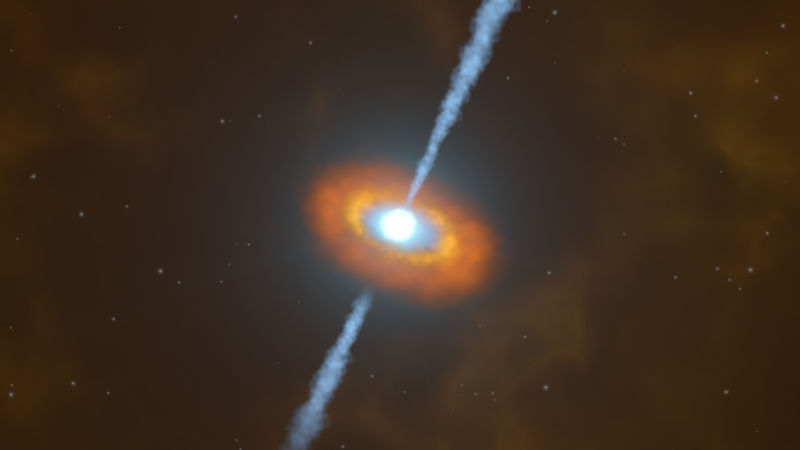Neutron-star merger blasted a jet of material through the debris

Last year saw the first event that astronomers detected using both photons and gravitational waves. The event, a gamma-ray burst, was triggered by the merger of two neutron stars, forming a single mass of neutrons that was large enough to collapse into a black hole shortly afterwards. Before the black hole appeared, however, lots of material was ejected into space, where it formed heavier elements.
Now, researchers are reporting follow-up observations that suggest the black hole has formed jets of material that are moving at a substantial fraction of the speed of light. The jets have moved fast enough that we have been able to watch them drive through the expanding shell of debris and pass beyond it into open space, helping reveal more details about what's been going on post-collision.
SuperluminalThe neutron-star collision was picked up nearly simultaneously by the Fermi Space Telescope, which detected gamma rays produced during the collision, and the LIGO/VIRGO gravitational-wave detectors, which named the event GW170817. In response to the initial detection, many telescopes observed the initial debris in a variety of wavelengths. These observations confirmed that these collisions act as factories for heavy, neutron-rich elements that would be difficult to form in supernovae.
Read 9 remaining paragraphs | Comments